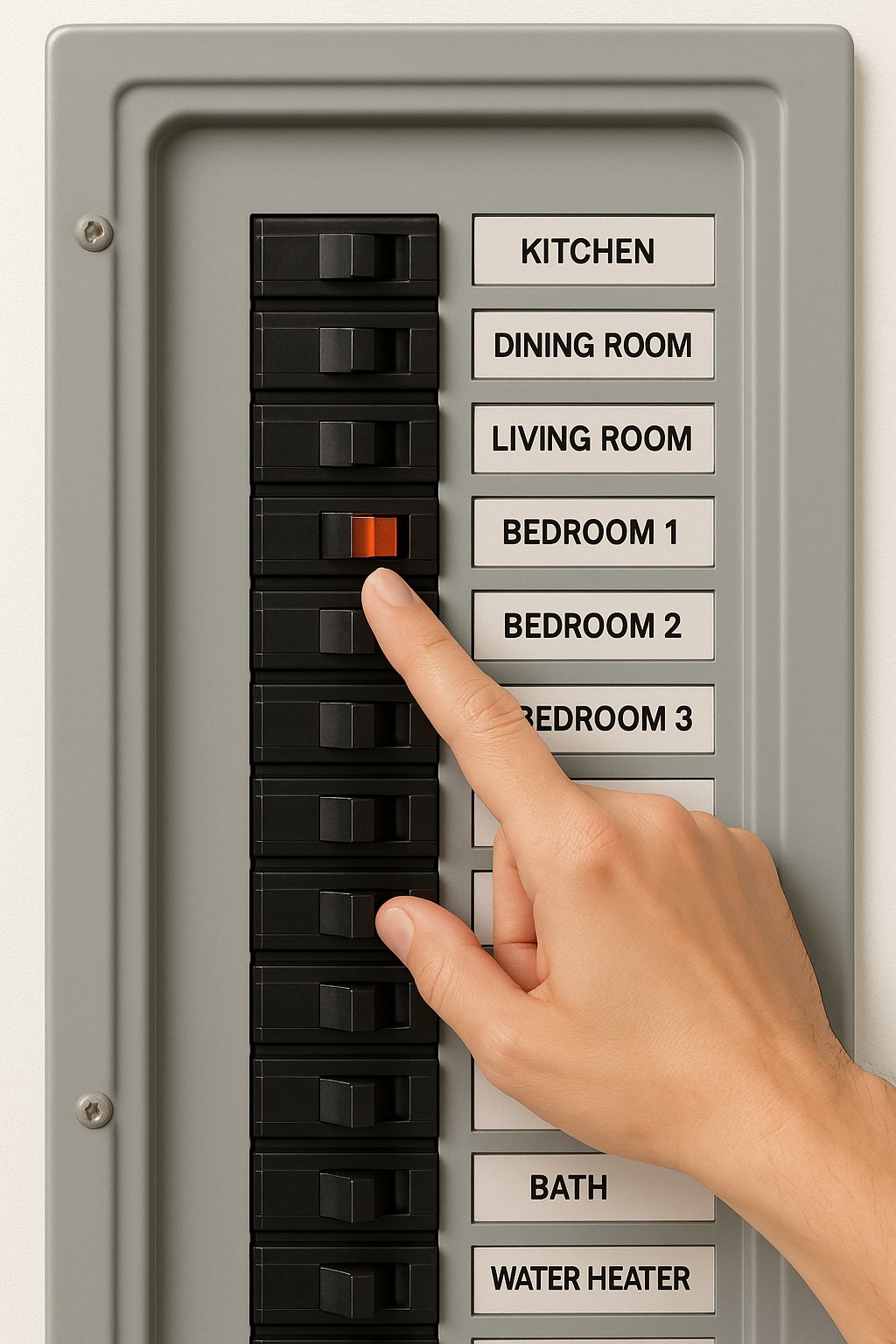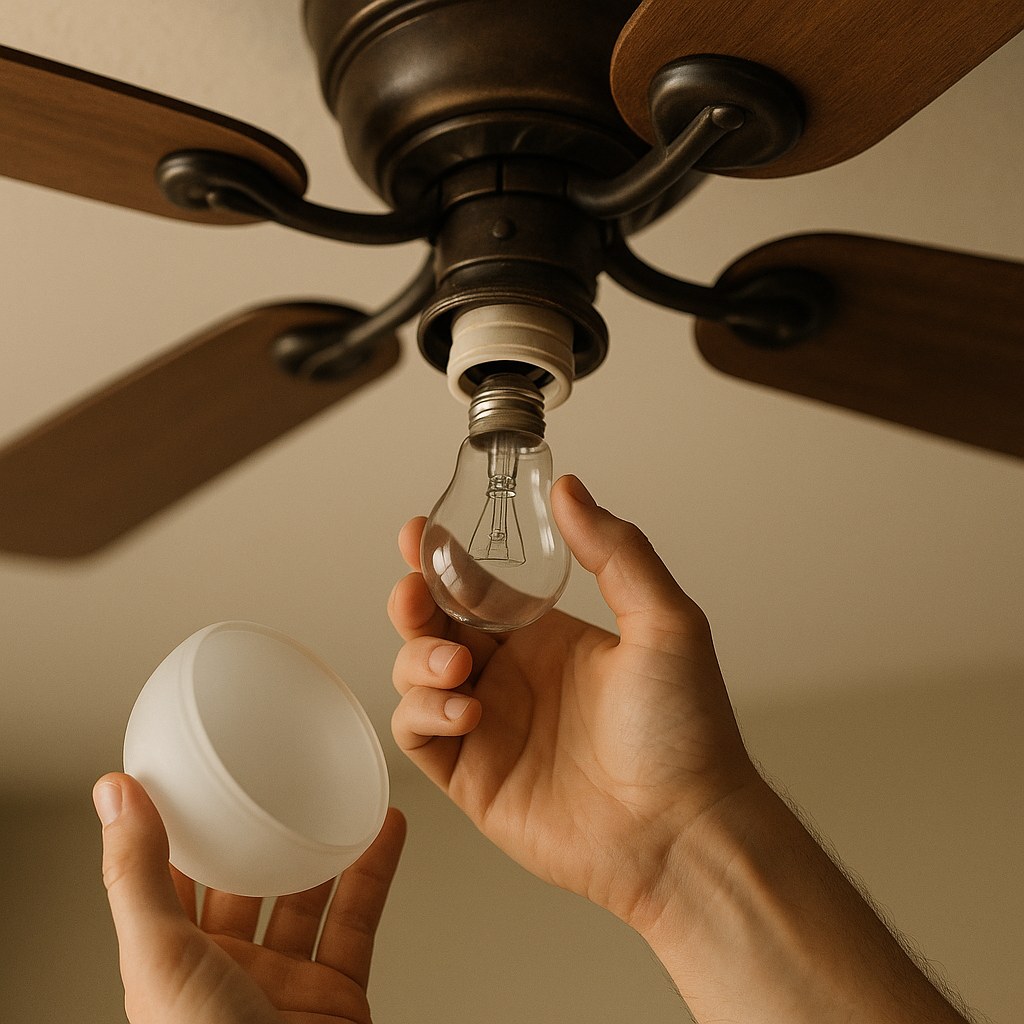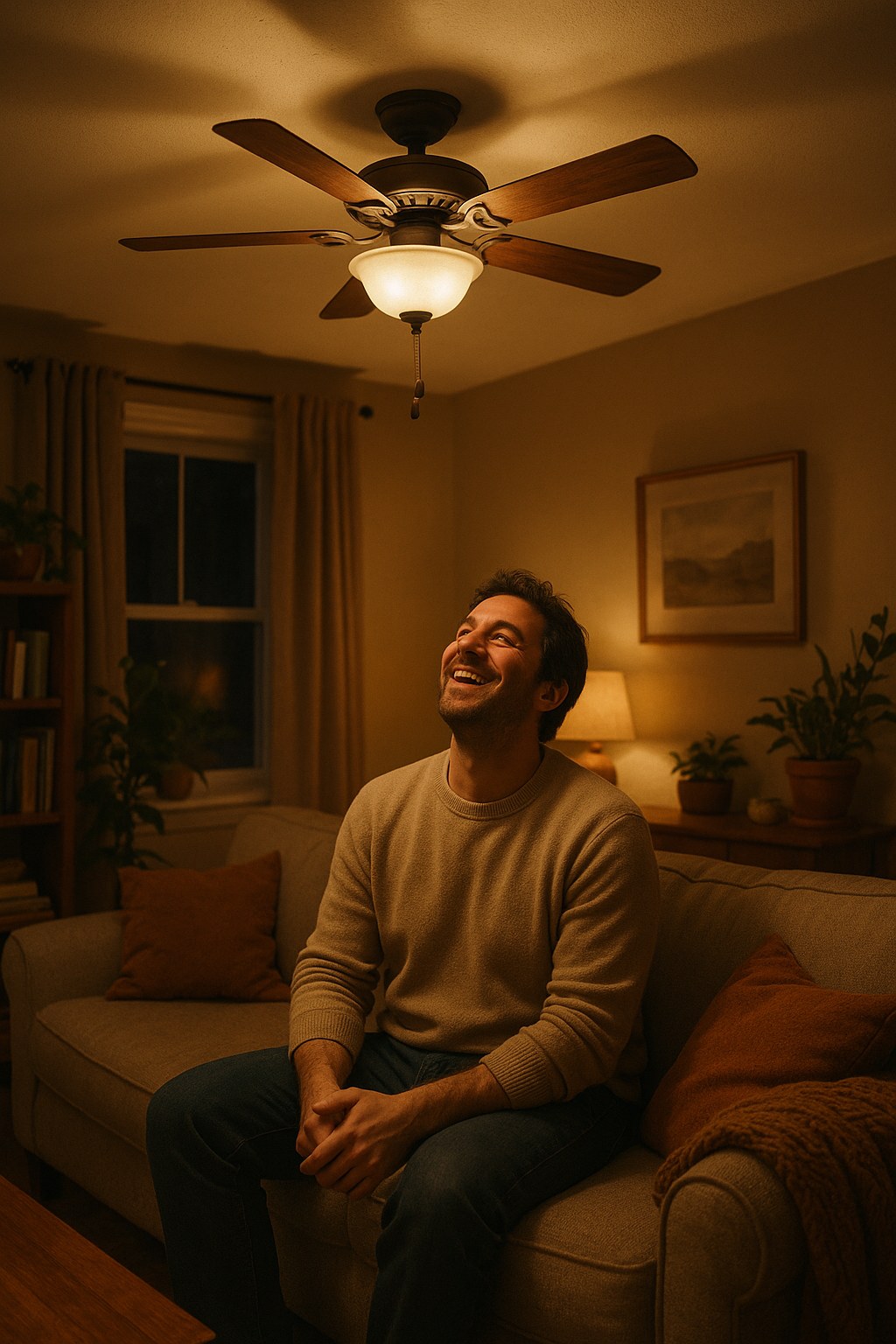It’s a frustratingly common scenario: you walk into a room, flip a switch, and your trusty ceiling fan whirls to life, but the light stays stubbornly off. You’re left in the dark, wondering what went wrong. Is it the bulb? The switch? Something more complicated?
Hey there, I'm Tyler from Casa, and I'm here to walk you through it. The good news is that a fan light not working is usually a simple fix you can handle yourself in under 20 minutes. Forget calling an expensive electrician just yet. With a few basic troubleshooting steps, you can diagnose the problem and likely solve it without breaking a sweat.
Let's shed some light on this issue together.
Why Isn't My Ceiling Fan Light Working? Common Culprits
Before we grab a screwdriver, let's understand what could be causing the blackout. Most of the time, the issue boils down to one of these four things:
- A Power Problem: A tripped circuit breaker is a frequent offender. If both the fan and the light are dead, this is the first place you should look.
- A Control Issue: The problem could lie with the wall switch, dimmer, remote control, or pull chain that operates the light.
- A Burnt-Out Bulb: This is the most obvious and easiest fix. Light bulbs don’t last forever, and it’s often the first component to fail.
- Faulty Wiring or Socket: In some cases, the issue might be a loose wire or a faulty light socket within the fan's housing. This is less common but still a possibility.
Our guide will tackle these issues in order, starting with the simplest solutions first.
Step-by-Step Guide to Fixing Your Fan Light
Ready to get started? Let’s walk through the process.
Step 1: Check the Power at the Source
First things first, let’s make sure the fan is actually getting power. This step is especially important if both the fan and the light have stopped working. If the fan still spins, you can likely skip ahead to Step 2, but it never hurts to be thorough.

- Safety First: Go to the wall switch that controls the ceiling fan and flip it to the "OFF" position.
- Locate Your Circuit Breaker Panel: You’ll usually find it in the basement, garage, a utility closet, or hallway.
- Look for a Tripped Breaker: Scan the rows of switches. A tripped breaker will be positioned in the middle, between the "ON" and "OFF" positions, and may have a small red or orange window showing. Look for the breaker labeled for the room your fan is in (e.g., "Living Room," "Master Bedroom").
- Reset the Breaker: To properly reset it, you must first push the breaker switch firmly to the full "OFF" position. Then, flip it back to the "ON" position. You should hear a solid "click."
- Test It Out: Head back to the room, flip the wall switch back on, and see if the light now works.
If resetting the breaker brought your light back to life, you’re all set! If the breaker trips again immediately, you may have a more serious wiring issue that requires a professional. If the breaker was fine and the light is still off, let's move on to the controls.
Step 2: Troubleshoot the Controls
How you turn your fan light on and off will determine our next steps. We’ll cover both common setups: wall switches and remote/pull-chain systems.
For Lights Controlled by a Wall Switch or Dimmer
If you use a standard wall switch, sometimes the simplest solution is the right one.
- Cycle the Switch: Flip the light switch on and off a few times. It sounds silly, but switches can sometimes get stuck or have poor contact. Make sure you leave it firmly in the "ON" position.
- Check the Dimmer: If you have a dimmer switch, make sure it’s turned all the way up to maximum brightness. It's surprisingly easy to accidentally turn a dimmer all the way down, making it seem like the light is broken.
If a quick fiddle with the switch or dimmer solves the problem, great! If not, the bulb is our next suspect.
For Lights Controlled by a Remote or Pull-Chain
Remote controls and pull chains introduce a few extra variables.
- Ensure the Wall Switch is ON: Many remote-controlled fans are still powered by a main wall switch. Make sure that switch is flipped on, or the remote won’t work at all.
- Check the Remote Batteries: This is the number one cause of remote-controlled light failure. Pop open the battery compartment and install a fresh set.
- Test the Pull-Chain: Give the light's pull chain a couple of firm, distinct tugs. The internal switch mechanism can sometimes get stuck between settings. Pull it once or twice to cycle it to the "ON" position.
If new batteries or a pull on the chain does the trick, you've solved it. If you're still in the dark, it’s time to look at the bulb itself.
Step 3: Replace the Light Bulb
A burnt-out bulb is the most common reason for a fan light to stop working. Here’s how to safely replace it.

- Turn Off All Power: Flip the wall switch off. For maximum safety, I recommend also turning off the corresponding breaker at your panel. Wait for the fan blades to come to a complete stop before you begin.
- Remove the Globe or Shade: Most ceiling fan light kits have a glass globe or shade held in place by several small thumbscrews. Carefully loosen these screws (you might need a flathead screwdriver) until you can gently remove the globe. Be sure to support it with your other hand so it doesn't fall.
- Unscrew the Old Bulb: Turn the old bulb counter-clockwise to remove it. Take a quick look—does the filament inside look broken? Is there a dark or cloudy spot on the glass? These are sure signs of a dead bulb.
- Install the New Bulb: Screw in a new, compatible light bulb, turning it clockwise until it's snug. Be careful not to overtighten it.
- Test Before Reassembling: Before you put the globe back on, it's a good idea to restore power at the breaker and wall switch to confirm the new bulb works.
- Re-attach the Globe: Once you've confirmed the light is working, turn the power off again and carefully re-attach the globe, tightening the screws until they are secure but not overly tight.
When to Call a Professional Handyman
If you've checked the power, tested the controls, and installed a brand-new bulb, but the light still won't turn on, you may be dealing with a more complex issue. These problems often involve the fan's internal wiring and are best left to a professional:
- A faulty light socket.
- A broken pull-chain switch mechanism.
- A bad wire connection inside the fan housing.
- A failed wattage limiter (a safety device in some modern fans).
At this point, it's safer and more efficient to call a qualified handyman or electrician.
How Much Does It Cost to Fix a Fan Light?
The great thing about this problem is that the DIY fix is incredibly cheap.
- DIY Cost: The price of a new light bulb, which can range from $5 to $15 for a pack of energy-efficient LEDs. If you need new batteries for a remote, that's another $5.
- Professional Cost: Hiring a handyman typically costs between $60 and $125 per hour, according to Angi. Most will also have a minimum service fee. You can expect a simple fan repair to cost anywhere from $75 to $200.
By spending 20 minutes troubleshooting it yourself, you can save a significant amount of money.
Final Thoughts
A ceiling fan that doesn't light up is a nuisance, but it's rarely a sign of a major problem. By following these steps—checking the power, testing the controls, and replacing the bulb—you can solve the issue yourself 9 times out of 10. You'll not only save money but also gain the confidence that comes with mastering a bit of home maintenance.

And for all your other home improvement projects and repairs, Casa is here to help. Download the Casa app today to get access to more easy-to-follow DIY guides, keep track of your home's maintenance needs, and connect with trusted, vetted professionals when you need a helping hand. Stay bright


